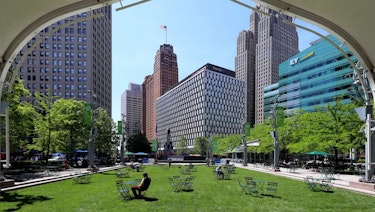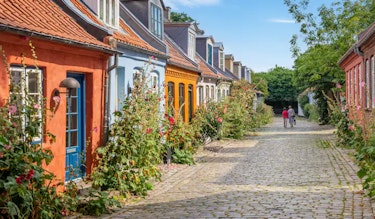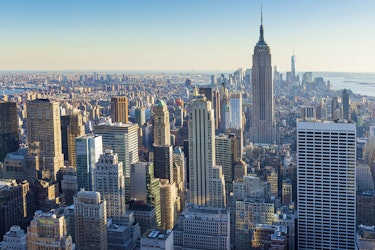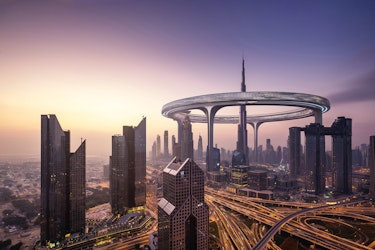Place branding has evolved into a vital element of city marketing strategies that highlight the enticing aspects of the cities. Place branding could help the city's economy flourish and improve the quality of life for both locals and tourists. Sebastian Zenker, an associate professor at Copenhagen Business School, defines place branding as the intentional management of upgrading, changing, or creating the place brand in the minds of the place consumers. Therefore, the intangible attributes provided by the quality of places, the government's plan for enhancing the city's infrastructure, the diversity of the inhabitants, as well as its culture, history, and way of life, have an impact on branding.
For towns that have lost their reputation over time or have unpleasant history, the use of rebranding strategies in conjunction with a strong brand management system helps shape perceptions to evolve with recognizable qualities and a distinct sense of place. Placemaking is a potent tool for place branding and can be tactical, creative, strategic, or a combination of all of these, depending on the circumstance.
Here are five place branding strategies that can be used to market a city as an attractive destination for residents, tourists, and real estate investors.
1. Retaining the sense of place
Cities have many facets and are dynamic. As a result, creating a feeling of place in a city depends equally on boosting community wellness, creating a sense of place, and encouraging positive perceptions of the city. Together, these components strengthen the branding effort, and it might be important to achieve this by carefully planning places to go and preserving local history.
Strategic placemaking techniques were used to redesign Campus Martius in Detroit, bringing in more than $2 billion in investment within a two-block radius and another $2 billion by the following year.

Credit: FOX 2 Detroit
2. Development of iconic projects
Significant spatial repercussions from the flagship projects have proven to be a useful instrument for urban redevelopment. The flagship projects affect the neighbourhood in two ways: first, by simply being there, and second, by enticing customers and acting as catalysts for future capital investment. Famous architectural projects and large-scale urban initiatives in underutilised urban areas can both successfully redevelop a city's spatial features.
For instance, the Guggenheim museum in Bilbao was designed to be a catalyst for the revitalization of a failing industrial city that is also plagued by Basque separatist terrorism. The initiative established a positive public perception of the city and gave rise to the term "Bilbao effect," which describes the phenomena of investing in iconic architecture and the arts to revitalise a city that is experiencing economic decline. The Sydney Opera House, the Pompidou Center in Paris, the Oslo Opera House in Norway, etc., are a few further instances of transformative landmark projects. Celebrity architects and internationally renowned developers are essential to the success of the flagship projects, but by incorporating a "local" element, these global projects can gain recognition in the surrounding community, reduce socio-spatial segregation, and avoid "sameness" across all global cities.

Credit: Architectuul
3. Organization of hallmark events
This is a part of the "Experience City Strategy," which holds that cities can make money off the experiences they offer, and that the demand for those experiences serves as a growth catalyst. Smaller communities can boost their exposure and reputation by hosting international events, luring tourists, and attracting newcomers. Even if destination branding is only getting started, it's crucial to keep the location's most valuable assets connected to the ideal visitor perception. The city can maintain its identity or reinvent itself through its ties to these events, but in order to profit from these transient phenomena over the long term, a strategic event portfolio must be maintained.
Many small Danish cities, such Herning, have done this successfully by investing in cultural and sporting events and rising to the status of a business hub. Another Danish city, Horse, transformed itself from a seedy district with a sizable prison by organising rock concerts.

Credit: Guide to Europe
4. Developing the Creative Economy
The concept of the "Creative City" is intimately tied to urban development. As a result, many communities look for educated and talented people to live there, work there, and support the city's economic growth. The abundance of competent labourers encourages the growth of cities as "creative centres," providing chances for employment, high-quality and affordable lifestyle options, as well as quality urban settings and city spaces. Many cities, like New York, Paris, London, and others, have successfully marketed themselves to entice the "creative class" with a variety of lifestyle options.

Credit: WorldStrides
5. Media-generated imagery
The non-spatial components of the urban environment must also be improved in order to better promote the new city image, in addition to the spatial components. In addition to media reinforcement, secondary communication, or "word of mouth," must be encouraged to close the image-reality gap in the physical quality of the cities.

Credit: TimeOut
The first step in the holistic development of cities is to establish a clear objective, which is then followed by making full use of all the resources at hand to ensure socioeconomic success. The true character of the location can be grounded in reality by establishing a resonance between the people, the people's environment, and the business. Additionally, in order to create a lasting brand strategy, the municipal administration and people must construct a system for cooperation from the start of the city's growth all the way to its success.
